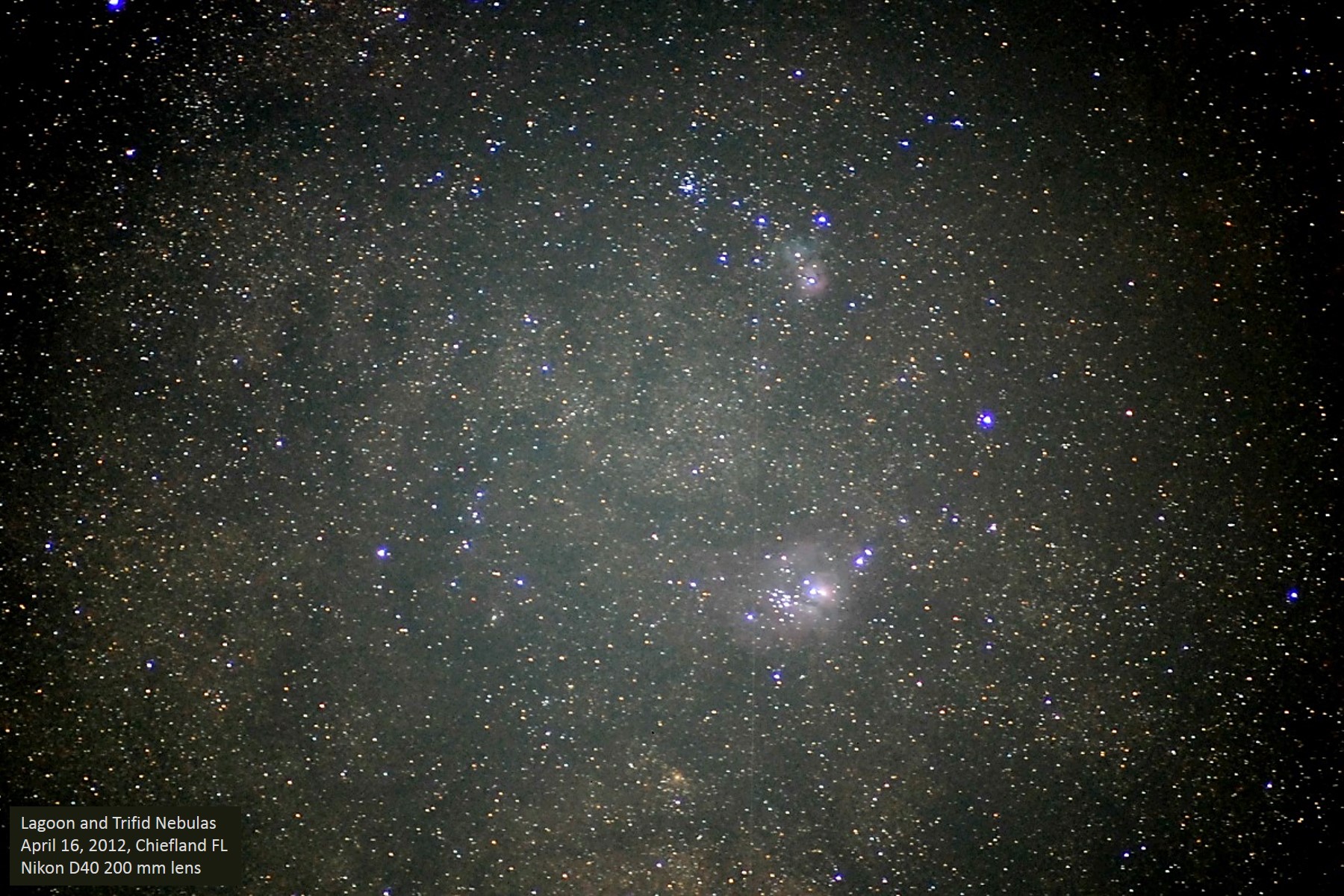
Object List:
The image illustrates the problem with stock
DSLR's from the perspective of recording the
Hydrogen 2 (HII) regions in emission nebulas.
The IR filter blocks infrared radiation, but
also the deep red color at 656.3 nm resulting
from electrons going from the 3rd energy level
down to the 2nd level
(n = 3 ----> n = 2).
It should be obvious that the electron energy
transitions from n = 3 to n = 2 would be the
most numerous, while each successively higher
transition occurs with diminishing frequency.
That is why emission nebualas appear red with
the use of film or a modified digital camera
with greater response in the far red end of the
spectrum. However, with those colors filtered
out in the case of my Nikon D40, the remaining
colors are skewed toward the violet or purple
range.
It surprised me to learn that emission nebula
colors all result from electron decay starting
at higher energy levels and ending at n = 2,
instead of n = 1. The transitions that end at
the lowest level (n = 1) are called the Lyman
series and all result in ultraviolet radiation.
Film photograph of Sagittarius
M8 ............ Lagoon Nebula
M20 ........... Trifid Nebula
M21 ........... Open cluster
NGC 6530 ...... Open cluster
NGC 6544 ...... Globular cluster
NGC 6546 ...... Open cluster
Balmer Series Energy Level n λ (nm) H-α n = 3 -----> n = 2 656.3 H-β n = 4 -----> n = 2 486.1 H-γ n = 5 -----> n = 2 434.0 H-δ n = 6 -----> n = 2 410.4
Modified DSLR Image of Lagoon/Trifid
I captured this image of the Lagoon/Trifid region from Chiefland, Florida in April 2012 with my Nikon D40 DX camera and a 200 mm lens. This section of Sagittarius includes the small globular cluster NGC 6544 as well as two open clusters in the NGC catalog and M21 to the northeast of the Trifid Nebula. Unannotated image, Back to Constellations